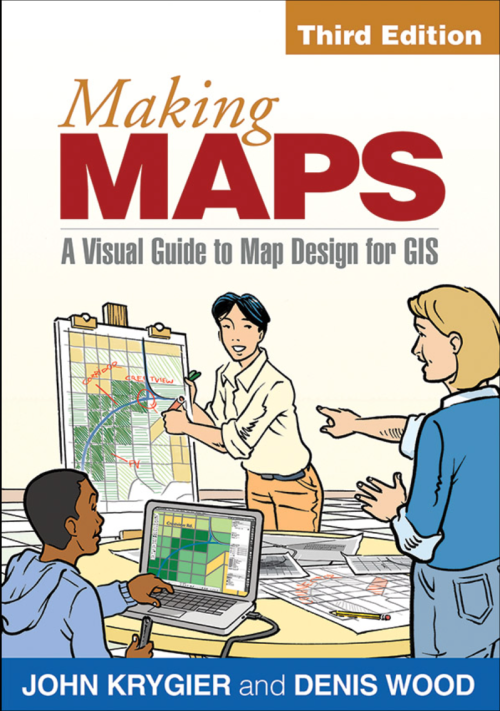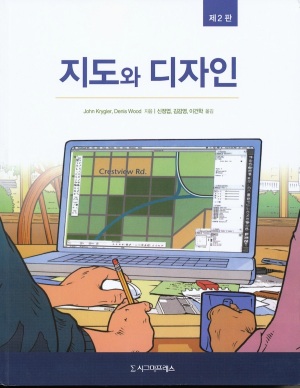And now… what at least a dozen of you have been waiting for…

Denis and I spent quite a bit of time rethinking significant parts of the second edition of Making Maps in several intense work sessions in Columbus, Ohio and Raleigh, North Carolina. Fists were pounded upon tables, changes demanded, reservations expressed, ideas refined, markers used to blot out the unacceptable and sketches drawn for new sections in the new edition. It was terrible fun.
It explains my lack of posts here at the Making Maps blog.
While the overall design of the book remains consistent with the 2nd edition, those of you with a technical bent will appreciate that the 2nd edition was entirely created in Freehand MX and Guilford and I translated the entire book to Adobe Illustrator and InDesign for the 3rd edition. You have no idea how much trouble that was.
After Denis and I settled the changes and updates, I spent over a year and a half producing the maps, graphics and text for the book, many hundreds of hours of research and production. A significant amount of the work was completed while sitting at my daughter Annabelle’s synchronized swimming practices (11 hours a week!). I can still smell chlorine when I look at the book.
Changes in the 3rd edition of Making Maps include:
- 40+ new pages of content
- expansion of substantive color examples by 25%
- 35+ new, map exemplars throughout book
- changes on over 50% of the pages in the book
- new introductory maps including
- Jack Kerouac’s hand drawn map he drew while planning On the Road
- Boris Artzybasheff’s creepy map of global tropical diseases
- Gwendolyn Warren and Bill Bunge’s famous map of Children’s Traffic Fatalities in Detroit
- Guy Harold Smith’s Physiographic (and typographic) map of South America
- expansion and split of chapter 9 on map symbolization into two chapters, focusing on map symbols of less and more abstract geographic data
- significant expansion of the graphic novel, extended throughout the book, as an exemplar how making maps can change the world
But that’s not all…
- expanded discussion of when mapping is inappropriate
- updated content on map medium guidelines
- addition of content on viewing distance rules
- expanded discussion of Impact Evaluation with new fracking oil shale example
- expanded discussion of time and mapping, including mapping the future
- addition of content and examples of geodata locational services and privacy
- addition of geoweb concepts including interoperabily, open data layers, tile maps
- extensive refinement and clarification of map projection terminology
- discussion of when map projections don’t matter
- updated data in maps on poverty, hate groups, firearms deaths, election results, African American absence, etc.
- new maps on slavery and lynchings in the US
- expanded discussion with 10 new examples in Ways to Think about Map Symbols section
- new two pages section on symbolizing terrain
- new section on Ways to Think about Map Symbolization Abstraction with new maps on Detroit children traffic fatalities
- reorganization of Color chapter into a more logical progression with a trio of new Voyager maps showing monochrome, two color, and full color examples
- revision, expansion, and updates of More information sections in each chapter
- new map quotes
Despite 40 new pages of material in the book, it is still under 300 pages. No bloat here – no “book junk.”
I’ll post more bits from the book in the coming weeks, months, …
And the book starts thusly…






































